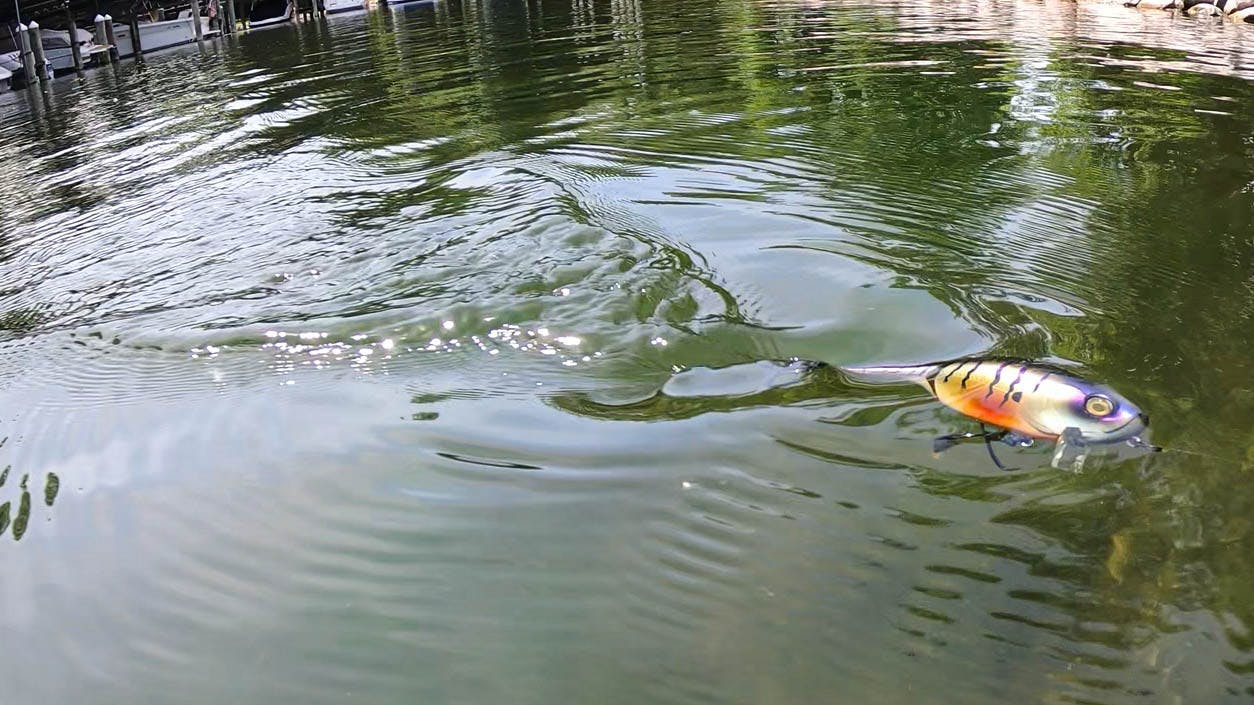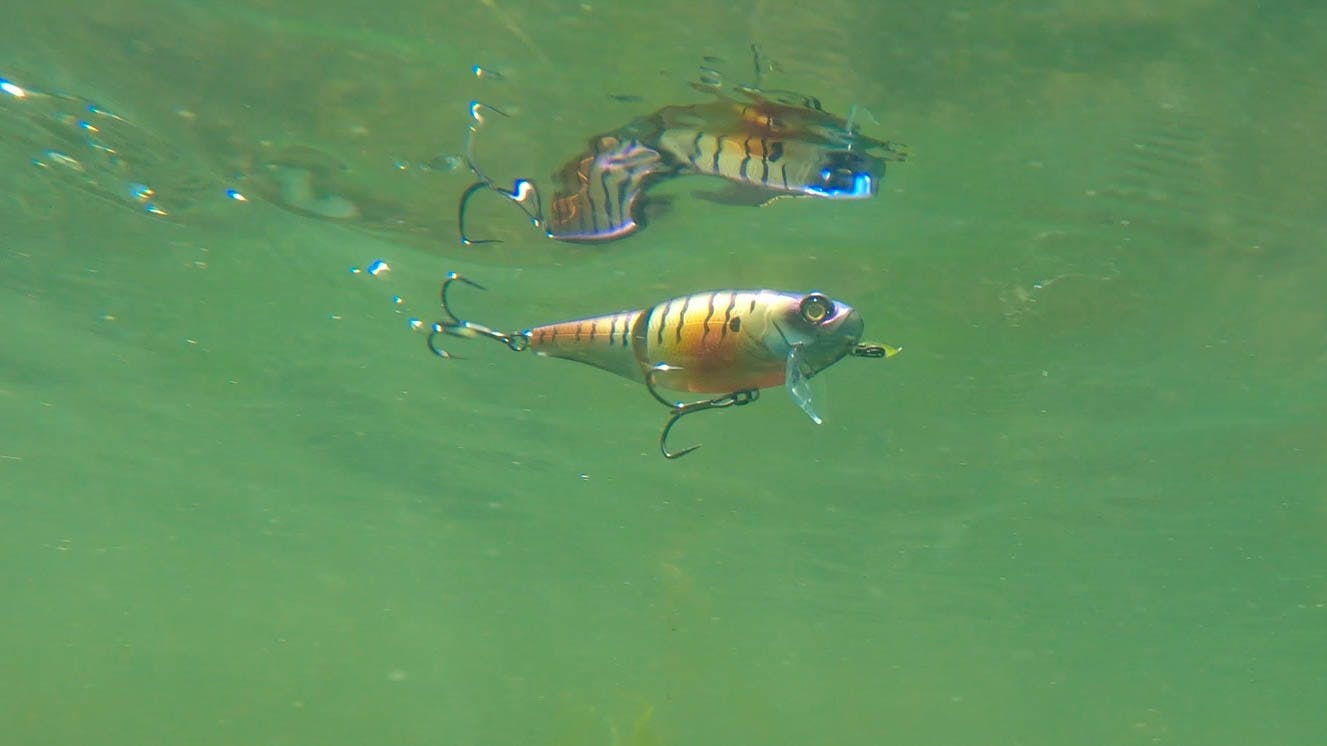
Refine Your Wake Bait Technique
Wake baits have been a part of the bass fishing scene for many years now but many anglers are likely not throwing them as much as they should. The wake bait craze has died down a bit with the constant release of various topwater lures, but this presents a great opportunity to show the fish in your lake a lure they may have not seen in a long time. Here are some tips on when, where, and how to fish a wake bait so you can catch more fish the next time you get out on the water!
What does a wake bait do?
A wake bait is a baitfish-style hard bait with a small lip and generally equipped with a pair of treble hooks. Wake baits create a small wake when retrieved just underneath the surface by the lip of the bait causing it to swim in an s-motion.

The intent is to imitate some sort of forage species that bass or other predatory fish feed on near the surface of the water. This could include, but is not limited to, baitfish, frogs, snakes, mice, and basically anything else a bass can fit in its mouth.
How to fish a wake bait
Fishing a wake bait is pretty straightforward. The easiest and most effective way is to make a long cast and reel in the lure with a slow steady retrieve. By doing this, you allow the lip of the bait to do the work, causing the bait to swim just underneath the surface of the water.
Related: Topwater Retrieves Explained
What actually might be more important is the rod and reel you throw it on. A 7' to 7'4" casting rod is the ideal length for making long casts to cover water with a wake bait. It's also important to use a rod with a nice parabolic bend to absorb the hard runs that bass will make during the fight without the light wire treble hooks pulling off.
As for the reel, any gear ratio between 6 and 7 will work just fine. Braided line is preferable, being that it floats, which will allow your lure to stay near the surface of the water. Using fluorocarbon may cause your wake bait to dive too deep, resulting in no wake being created near the surface.
Pro tip: Tie on a 3-foot monofilament leader to the end of your braided line. Monofilament floats so it will not impact the diving depth AND is a bit stiffer than braided line, so you're less likely to have your line foul your hooks on the cast.
When should you be throwing a wake bait?
You can find success throwing wake baits throughout the majority of the day but there are definitely some factors to keep in mind when you're out on the water.
1. The time of day
While it's possibly to have fish feeding near the surface throughout the day, most of your surface activity will take place during the early mornings or late evenings. The reason is due to the lowlight conditions allowing fish to be more active without the sun beaming down on them. On overcast days, you can expect the duration of your window of opportunity to increase as well.
2. Water temperature
Fish, being cold-blooded creatures, are more active when the water is warm and less active when the water is cold. Throwing a wake bait during warming trends can be a great way to get more bites. In addition, many types of fish cover retain heat from the sun, so focusing on areas nears rock or heavy vegetation can help you find warmer water during the colder months.
3. Seasonal behavior of forage species
Wake baits are generally trying to mimic forage species, so it's important to understand what those species are doing during a given season. Let's look at the shad spawn for example. According to the South Carolina Department of Natural Resources, shad spawn later in the year than bass do, and it's usually right around the time the bass are trying to recover from their spawn. In addition, shad will spawn near the surface of the water during the early morning. Pairing that with hungry bass looking for recovery meals; you've got yourself a recipe for an awesome wake bait session.
Which wake bait is right for you?
There are many options to choose from when trying to pick the right wake bait for your particular body of water. "Match the hatch" is one of the most common phrases you'll hear regarding bait selection. Originally a fly fishing phrase, it implies matching the bug hatch, or in this case, the forage species in your body of water.
In some lakes, matching the hatch means bluegill colors, while in other lakes, it could be shad or perch. Understanding the forage species in your lake is essential to not only picking the right color, but also the correct size bait. One last thing to consider when selecting colors is to try and view things from a bass's perspective. When a lure is fished near the surface, the bass are looking up at it and will primarily see the bottom side of the lure. To help a bass key in on a lure, try to pick a color that contrasts with what the fish will be seeing when looking up. If the water clarity is good, dark bellied lures will stand out against the background of the sky, with whites and yellows being more prominent in dirty or stained water.